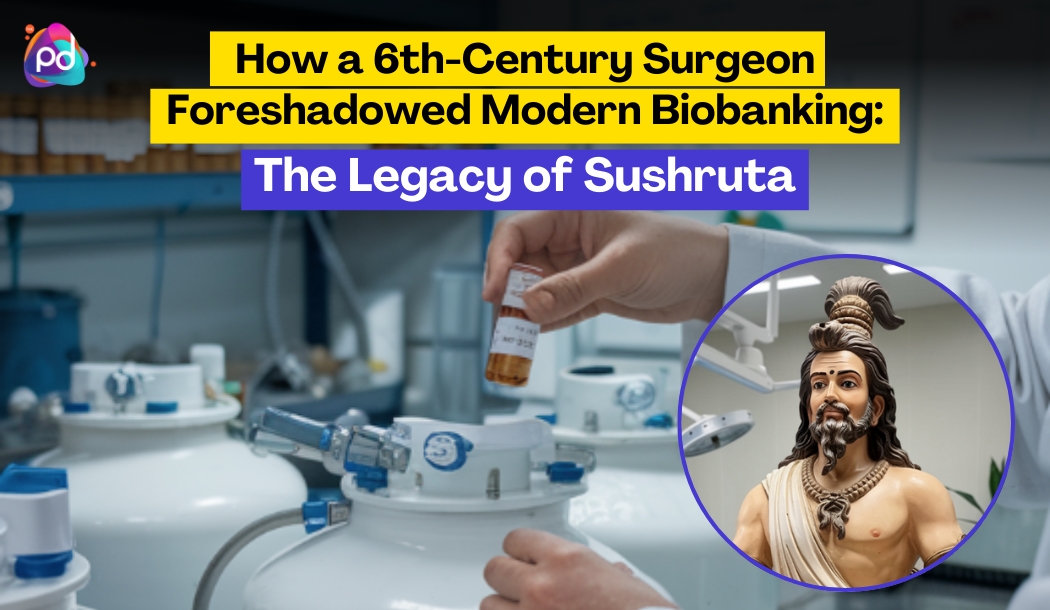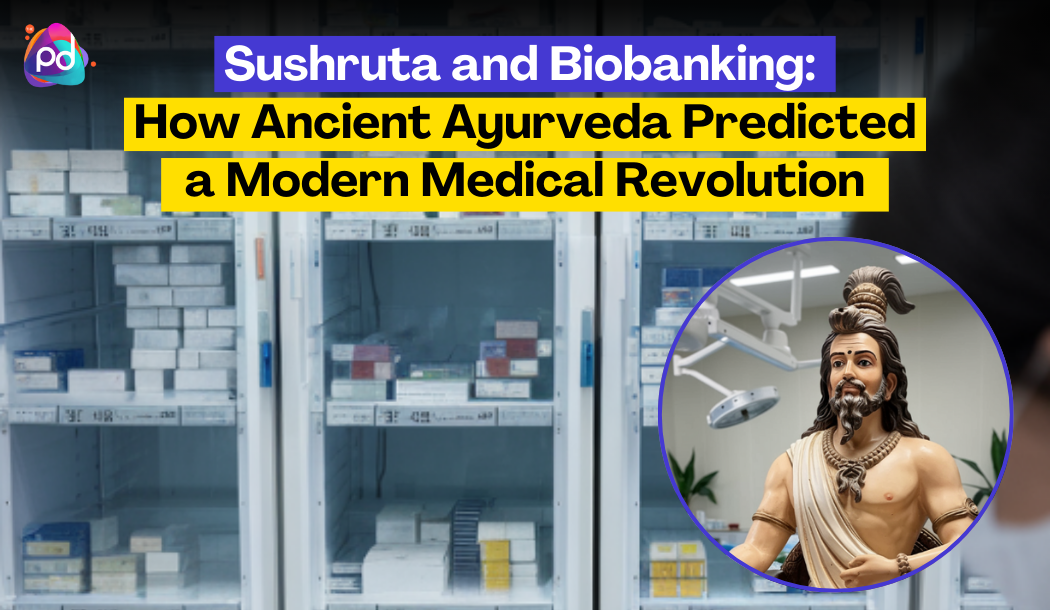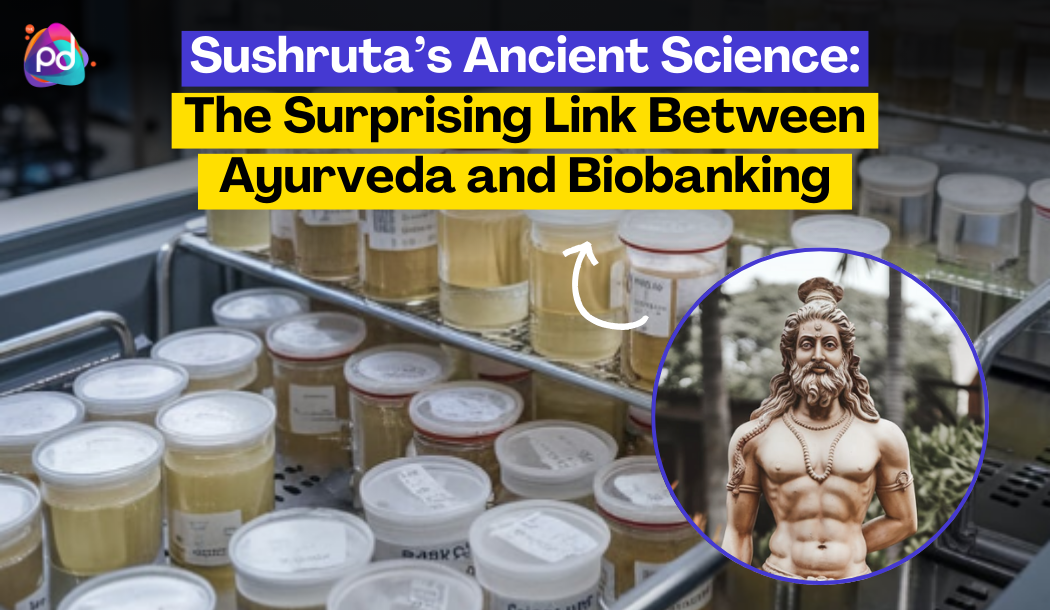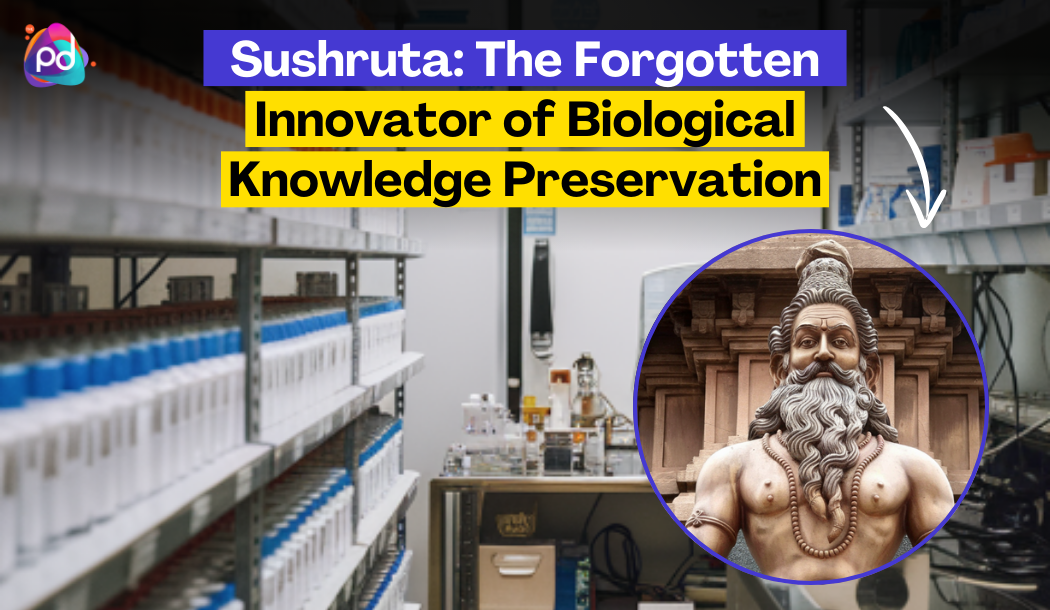How a 6th Century Surgeon Foreshadowed Modern Biobanking: The Legacy of Sushruta
The concept of biobanking, a cornerstone of modern medical research, might seem like a product of the last century. However, its roots can be traced back to the visionary practices of Sushruta, a legendary 6th-century Indian surgeon whose groundbreaking ideas on biological preservation and ethical medical practices remarkably foreshadow the principles of today’s biobanking.
In this blog, we delve into how Sushruta’s innovative methodologies laid the groundwork for modern biobanking and how his legacy continues to influence contemporary medicine.
Who Was Sushruta?
Sushruta, known as the Father of Surgery, authored the Sushruta Samhita, one of the most comprehensive medical texts in ancient history. His work encompassed detailed surgical procedures, anatomical studies, and the preservation of biological specimens for educational purposes.
His understanding of the human body and the emphasis on preserving specimens for future use echo the foundational practices of modern biobanking—the systematic collection and storage of biological materials like tissues, blood, and DNA for research and medical purposes.
Sushruta’s Practices and Their Parallels to Modern Biobanking
1. Biological Specimen Preservation
Sushruta advocated for the use of preserved cadavers for the study of human anatomy, emphasizing proper preparation and storage techniques. This mirrors the role of modern biobanks, where biospecimens are stored using advanced cryopreservation to ensure their longevity and viability for research.
2. Ethical Handling of Samples
The Sushruta Samhita highlights ethical considerations, such as treating the human body with respect and ensuring informed consent. These principles align with modern biobanking practices, where ethical frameworks like informed consent and data privacy are paramount.
3. Systematic Approach to Research and Education
Sushruta’s structured methods for using preserved specimens to educate surgeons paved the way for biobanks to become essential resources for medical training and research. Today’s biobanks serve as repositories of knowledge, accelerating discoveries in fields like precision medicine and genomics.
How Sushruta Foreshadowed Modern Biobanking Principles
A Focus on Knowledge Sharing
Sushruta believed in the open sharing of medical knowledge, advocating for the use of preserved specimens to educate future surgeons. Similarly, biobanks today facilitate global collaboration by providing researchers access to high-quality biosamples.
Maintaining Specimen Integrity
Sushruta’s detailed methods for preserving cadavers ensured that specimens remained useful for study. Modern biobanking employs cutting-edge technologies like cryogenic freezing and automated inventory systems to maintain the integrity of biological samples.
Application in Rare Disease Research
Just as Sushruta preserved specimens for studying rare medical conditions, biobanks today play a crucial role in rare disease research, providing insights that might otherwise be impossible due to limited patient populations.
The Impact of Sushruta’s Vision on Medicine
Sushruta’s revolutionary work extends far beyond his era. His contributions have influenced modern healthcare in several profound ways:
-
Advancing Medical Education:
Preserved specimens became invaluable tools for educating surgeons, a practice mirrored by modern biobanking’s support for medical research and training. -
Empowering Innovation:
Sushruta’s systematic methods inspired the meticulous approaches used in modern clinical trials and regenerative medicine, where biobanks are integral. -
Global Collaboration in Research:
His belief in sharing knowledge resonates in today’s interconnected world, where biobanks enable international partnerships to address global health challenges.
What Modern Biobanking Can Learn from Sushruta
The evolution of biobanking reflects humanity’s unyielding drive to advance healthcare, much of which can be traced back to pioneers like Sushruta. Modern practices like AI-driven biobanking, blockchain for sample tracking, and automated cryopreservation owe their philosophical foundations to Sushruta’s vision of ethical, systematic, and accessible medical knowledge.
Conclusion: Honoring Sushruta’s Legacy
The 6th-century surgeon Sushruta was far ahead of his time, foreshadowing principles that now define modern biobanking. His visionary ideas on preservation, ethics, and education have shaped the way we store and use biological specimens, bridging the ancient and modern worlds of medicine.
At Vigisolvo, we celebrate this legacy by offering state-of-the-art biobanking solutions that uphold the principles of quality, ethics, and innovation. By combining cutting-edge technology with a commitment to advancing healthcare, we strive to carry forward the visionary work of pioneers like Sushruta.
Explore our biobanking services today to see how we can help drive your research and innovation forward.




